Chapter 2: Genres & Subgenres – Part 3 (Romance)
Romance — The Architecture of Emotional Risk
Romance is often underestimated—dismissed as fluffy, formulaic, or unserious. And yet, it is the most profitable and enduring genre in all of literature, commanding nearly a quarter of all adult fiction sales annually. Why? Because love is the deepest risk we take. Romance is not about who ends up together. It is about how two people transform themselves enough to deserve each other. It is an engine of emotional architecture, turning vulnerability into narrative structure, and intimacy into dramatic stakes.
Romance spans a breathtaking range of subgenres: from Regency dukes and Highland lairds to queer summer flings and sci-fi love stories set on cryo-ships. There’s dark romance, paranormal romance, slow-burn tension, fake dating, enemies-to-lovers, forced proximity, and second chances. Each trope is not a cliché, but a challenge: how will you make this feel new, charged, alive? How will your characters earn their ending? Because that’s the promise this genre makes to readers: no matter how broken the people, how bruised the past, love will be transformative. But only if it’s honest.
Great romance isn’t just chemistry—it’s conflict. Internal wounds and external pressures must both work to complicate desire. Your protagonists must grow not despite the romance but because of it. Sex scenes, if included, must serve as character revelations—not mere titillation. Dialogue carries enormous weight here—each glance and sentence is a negotiation of trust. Craft this with precision. When done well, romance doesn’t just entertain—it heals. It shows us that change is possible, that intimacy is powerful, and that the bravest stories are often the ones that whisper rather than roar.
Contemporary Romance: Love in the Now
Contemporary Romance is the heartbeat of the modern world—messy, vibrant, and alive with the pulse of today’s anxieties and dreams. It’s the love story told with smartphones in hand, in cafés with mismatched chairs, with careers on the line and the weight of adulthood pressing in from every side. It is where two people collide not in castles or dystopias, but in cramped apartments, traffic jams, coworking spaces, and Sunday farmer’s markets. And yet, despite its modern trappings, it whispers a timeless truth: love is always urgent.
The emotional engine of Contemporary Romance lies in relatability. These stories often center around misunderstandings, emotional wounds, slow healing, and the internal wars waged in therapy rooms or over late-night text messages. They reflect real-world dilemmas—divorce, burnout, long-distance strain, cultural conflict, sexuality, identity, grief—and tackle them with vulnerability. Emily Henry’s Beach Read and Jasmine Guillory’s The Wedding Date are touchstones, not because of grand plot twists, but because of the way they make readers feel seen.
For writers, Contemporary Romance is a call to honesty. It’s about writing flawed, human characters who choose to love anyway. Who fight for connection in a world that often commodifies it. The key lies in emotional realism—conflict that matters because it stems from something deeply personal, something unhealed. The setting should enhance, not overwhelm. Your backdrop is modern life—but your drama is timeless.
Historical Romance: Love Across the Ages
Historical Romance is not just about period gowns and candlelit dances—it is rebellion wrapped in silk. It is love fought for in the margins of empires, whispered in carriages, kindled beneath rigid hierarchies. Whether set in Regency England, feudal Japan, Mughal courts, or Depression-era Harlem, Historical Romance reminds us that love has always been both a scandal and a salvation.
There is magic in the historical gaze—not just in the manners and fashion, but in the emotional stakes. In these worlds, a single kiss could ruin a reputation; a marriage might mean liberation or doom. The best Historical Romances don’t just costume the present—they channel the political, cultural, and gendered realities of the past into richly textured character arcs. Think of Lisa Kleypas’s passionate reformist heroines or Beverly Jenkins’s fierce Black protagonists navigating Reconstruction America.
Writers should not treat history as a stage prop. Research deeply. Understand the constraints your characters live within—laws, expectations, wars, language—and then find the cracks where love can grow. Use history not just as a setting, but as conflict. Let love be the rebellion. Let desire be the language that says, “We could be more than what this world allows.”
Paranormal Romance: Love That Transcends Nature
Paranormal Romance is love laced with blood, magic, and the monstrous. It’s where desire tangles with danger, where the kiss might be the key to immortality—or annihilation. Vampires, werewolves, witches, angels, demons, ghosts—these aren’t just creatures, but metaphors. They embody our fears, our forbidden lusts, our desire for transformation.
What makes Paranormal Romance so captivating is its unapologetic intensity. Everything is heightened. The stakes are mythic. A love interest might have centuries of trauma or be hunted by gods. The central tension often comes from power imbalance—immortal vs. mortal, predator vs. prey—but when written with emotional nuance, it becomes a crucible for consent, autonomy, and identity. Think Nalini Singh’s Psy-Changeling series, or J.R. Ward’s Black Dagger Brotherhood—where the supernatural only deepens the emotional complexity.
For writers, Paranormal Romance demands commitment to both worldbuilding and emotional stakes. You must make readers believe in a world where soul-bonds, blood oaths, and ancient curses exist—and still make them cry over a single missed phone call. The magic must be personal. The monsters must be human. And the love must feel like it could shake the heavens or burn the underworld down.
Fantasy Romance: Magic and Emotion Intertwined
Fantasy Romance is where love breathes in lands built from wonder. Here, romance arcs don’t just blossom—they evolve alongside kingdoms, curses, and revolutions. This subgenre asks not only what two hearts can endure, but what entire worlds must risk for a single connection to survive. Magic is not just an aesthetic flourish—it’s emotional metaphor, narrative device, and poetic landscape all at once.
Sarah J. Maas’s A Court of Thorns and Roses and Grace Draven’s Radiance epitomize the genre’s blend of epic scale and intimate feeling. These romances unfold in castles that float, across mountain passes haunted by spirits, or amid royal courts where truth is currency and betrayal a lullaby. The emotional rhythm follows the fantasy plotline—slow burns become soul-forged bonds, enemies-to-lovers arcs unfold against ancient wars, and lovers must learn to wield both sword and vulnerability.
Writers diving into Fantasy Romance must learn to balance both hearts and history. Develop magic systems that echo the emotional journeys of your lovers. Use fantasy tropes—quests, prophecies, curses—as romantic metaphors. Let the climax of the romance intertwine with the climax of the fantasy narrative. And above all, write love as mythic, not just passionate. Write it as the thing that breaks the curse, or becomes one.
Romantic Suspense: Love on the Edge of a Blade
Romantic Suspense is where the heart races—and not just from passion. It is a dance between love and danger, where every whisper of affection comes with the echo of footsteps in the dark. Here, romance thrives in the shadow of mystery: assassins in love, detectives falling for suspects, secret agents entwined in deadly conspiracies. The central heartbeat is dual—one half pounding from emotional intensity, the other from the pulse of impending doom.
The genre doesn’t just entertain—it seduces with danger. Writers like Nora Roberts and Karen Rose masterfully entwine high-stakes thrills with deep emotional bonds. This subgenre dares to ask: what does it mean to trust someone when your life is on the line? When your past is a wound and your lover might be the only one who can stitch it—or reopen it? Love in Romantic Suspense is hard-won, often forged in trauma, and strengthened in survival.
Writers must learn to weave tight plots with emotional nuance. The mystery or threat must be just as compelling as the romance. Let the suspense heighten vulnerability. Use danger to strip away facades and force your characters to reveal their truest selves. Love here isn’t a soft surrender—it’s a courageous choice in a world of secrets, stakes, and scars.
Dark Romance: Obsession and Redemption
Dark Romance asks readers to tread dangerous waters — stories where the love interest might be a criminal, a captor, or someone drenched in moral ambiguity. This is the realm of power imbalances, trauma bonds, and redemption arcs that come with blood on the floor. It is not about endorsing harmful relationships, but exploring them with intensity and psychological nuance.
Writers like C.D. Reiss and Skye Warren walk this knife’s edge, delivering stories of broken people who claw their way toward something resembling love. These romances challenge comfort. They ask: can a villain be loved? Can a survivor fall without breaking? What happens when pain and desire are tangled beyond recognition?
Writers must tread carefully — content warnings are non-negotiable. But if handled with depth and clarity, Dark Romance can illuminate the darkest corners of the heart. Show growth. Show consequences. And let love be the thing that either heals — or destroys.
LGBTQ+ Romance: Love as Liberation
LGBTQ+ Romance is not simply a category—it is a revolution of representation, a reclaiming of stories long erased or confined to tragedy. In this subgenre, love is political, poetic, and powerful. It exists in resistance to shame, in triumph over fear, and in joyful, tender defiance of heteronormative boundaries. These romances explore the fullness of queer experience: coming out, self-discovery, first love, found family, chosen identity.
This genre spans all tones—from angsty and tender to comedic and wild—and settings, from high school hallways to intergalactic pride parades. Becky Albertalli’s Simon vs. the Homo Sapiens Agenda, Casey McQuiston’s Red, White & Royal Blue, and K.J. Charles’ historical queer romances show how diverse and nuanced these narratives can be.
For writers, the key is authenticity. Treat your queer characters not as statements, but as fully fleshed people with desires, flaws, and agency. Let the romance be deeply personal—shaped by the unique wounds, joys, and language of queer identity. Whether soft and affirming or fierce and heart-wrenching, these stories are more than love—they are freedom written in ink.
Gothic Romance: Love in the Ruins
Gothic Romance is a fever dream wrapped in fog—a love that haunts, bruises, and beckons with ghostly fingers. It is where decaying mansions echo with secrets, where a storm cracks the sky as your protagonist glimpses the truth about their mysterious lover. Passion and paranoia go hand in hand here. It is the romance of shadows and sharp edges, of yearning made monstrous.
Think of Daphne du Maurier’s Rebecca, or Silvia Moreno-Garcia’s Mexican Gothic. The appeal is primal: a heroine trapped in a world that doesn’t believe her, a male figure shrouded in sorrow or secrets, and a love that might destroy or redeem. These stories thrive on atmosphere—gothic architecture, candlelight, ancestral curses—and often center female agency in a world trying to consume it.
Writers must wield mood like a weapon. Your prose should feel like lace and poison. Let the setting bleed into the characters. Use the romantic arc to ask: can love survive madness? Can desire be trusted when the house itself seems to breathe? Gothic Romance is not about happily ever afters—it is about love that survives the fall.
Second-Chance Romance: Love Rekindled
Second-Chance Romance is a return to the flame—not one that flickers gently, but one that scorched and scarred, and now glows again. It’s the subgenre of unfinished business, of what-ifs and maybes turned into finallys. It is about two people who have known loss—of each other, of time, of dreams—and decide, despite it all, to try again.
This genre often swims in emotional depth. The couple may have been lovers in youth, partners torn apart by circumstance, or even enemies shaped by shared history. The magic lies in the tension between the past and the present. Love here is not naive—it is wiser, wearier, but more powerful because it knows the cost.
Books like Before We Were Strangers by Renée Carlino or The One Who Got Away by Bethany Chase thrive on nostalgia, heartbreak, and the ache of time. Writers must master subtext. The silences between characters should feel heavier than their words. Every glance, every flashback, every hesitant touch is a step toward healing a love that once broke.
Enemies-to-Lovers: From Blades to Belonging
Enemies-to-Lovers is perhaps the most electric of all romance subgenres. It begins with tension sharp as a dagger, with barbed insults and dangerous chemistry. And yet beneath every snarl lies a question: what if the person I hate sees me more clearly than anyone else? This is the subgenre of pride clashing with vulnerability, of walls crashing down in slow, reluctant surrender.
From The Hating Game by Sally Thorne to Serpent & Dove by Shelby Mahurin, this subgenre thrives on banter, ego, misunderstanding, and unresolved tension. The emotional journey is layered—characters must deconstruct not just their prejudice, but their own emotional defenses. Love becomes the battlefield and the prize.
For writers, the balance is key. There must be true growth—not just snark. The enemies must become allies not through convenience, but through emotional transformation. Let their rivalry mirror something deeper—loneliness, fear of intimacy, grief. When they fall, it should feel like a betrayal of everything they once knew—and a relief beyond measure.
Friends-to-Lovers: Love That Grew Quietly
Friends-to-Lovers is the gentle bloom—the slow thaw of intimacy that becomes something more. It is built not on grand declarations, but on everyday devotion: remembering coffee orders, lending a coat, staying up late to talk about nothing. The tension lies not in rivalry, but in hesitation—the fear that in reaching for more, you could lose everything.
This subgenre is deeply comforting but also quietly devastating. It reveals how love can be so close, so obvious to everyone except the two hearts entangled in its orbit. Books like Love and Other Words by Christina Lauren and People We Meet on Vacation by Emily Henry embody this slow burn and the bittersweet ache of finally realizing what was always there.
For writers, this subgenre demands emotional subtlety. The stakes may seem small, but they’re deeply personal. Let every shared joke, every accidental touch, build the undercurrent of tension. When the confession comes, it should feel inevitable—and terrifying. This is love that says: I’ve always seen you, and I’ve been afraid to say it.
Mythological Romance: Love of Gods and Mortals
Mythological Romance is thunder wrapped in rose petals. It is the kind of love that shatters stars and remakes creation—where deities fall for mortals, mortals challenge gods, and love stories echo through centuries of myth and meaning. Here, romance transcends human frailty to flirt with the divine, the cursed, the legendary.
In this subgenre, ancient mythologies—Greek, Hindu, Norse, Celtic, Egyptian—are not dusty relics but breathing worlds where romance becomes an epic. Consider Madeline Miller’s The Song of Achilles and Circe, where love is tangled in fate, power, and transformation. Or take Bollywood’s reinterpretations of Krishna and Radha, which pulse with longing and spiritual intensity.
Writers stepping into this world must treat myths not as static templates but as evolving echoes. Honor the source material while daring to ask new questions: What happens when love defies fate? When a goddess falls for a flawed man? When immortality makes love a curse? The challenge is balancing grandeur with intimacy—making a divine romance feel close enough to hurt, and sacred enough to awe.
Sports Romance: Love in the Arena
Sports Romance is where adrenaline meets affection, where the heat of competition fans the flame of chemistry. It’s the love story that sweats and swears, that breaks through physical limits and emotional barriers. The backdrop may be stadiums, ice rinks, basketball courts, or fighting rings, but at its core, it’s about two people playing for each other’s hearts.
These stories often explore themes of ambition vs. vulnerability, public persona vs. private truth. In The Deal by Elle Kennedy, or Kulti by Mariana Zapata, protagonists are athletes—or linked to athletes—and romance unfolds amid the grind of discipline, injury, fame, or failure. The physical tension of sports mirrors emotional tension, making every touch, glance, or coaching session pulse with unspoken desire.
Writers must balance physical detail with emotional arcs. Make the sport feel real, the stakes high. But also let us see how love grows through encouragement, challenge, and mutual support. Let characters collide, train, fall, and win—not just trophies, but each other.
Rockstar / Celebrity Romance: Fame, Fire, and Fragility
Rockstar and Celebrity Romance throws love into the spotlight—blinding, burning, and unrelenting. Here, one or both protagonists are famous: singers, actors, influencers, icons. Their love stories are framed by flashing cameras, scandalous rumors, fan obsession, and the cost of being seen by millions yet truly known by few.
This genre allows for lavish settings—world tours, red carpets, private islands—but also digs into loneliness, mental health, identity, and the trauma of performance. Works like Idol by Kristen Callihan or Daisy Jones & The Six by Taylor Jenkins Reid explore not just the glitz but the ghostly silence backstage. Love becomes both escape and exposure.
For writers, the emotional stakes are high. Trust is the rarest currency. Every kiss risks becoming a headline. Create tension between image and reality—what the world sees versus what your characters actually feel. Let your lovers wrestle with fame’s seduction and isolation. In a world addicted to personas, make love the one thing that demands truth.
Romantic Comedy (Rom-Com): Love That Laughs
Romantic Comedy is sunshine distilled into story. It’s the genre that gives us permission to fall in love with laughter in our lungs and a little chaos in our hair. These are love stories born from misunderstandings, mishaps, meet-cutes, and mayhem—but always with a wink, a grin, and a heart that knows where it’s going.
Classic films like When Harry Met Sally, and modern books like Beach Read by Emily Henry or The Love Hypothesis by Ali Hazelwood, show how Rom-Coms blend snappy dialogue, lovable flaws, and emotional catharsis. This genre is often about characters who need to grow emotionally while stumbling through hilarious circumstances that force vulnerability.
Writers must master timing—both comedic and romantic. Create characters who are emotionally honest, even when they’re awkward. Use levity to explore deeper truths. A well-placed joke or embarrassing encounter should advance the romance, not just fill space. Let your readers laugh—but also let them ache a little before the happy ending lands like a perfect punchline.
Domestic Romance: Love in the Quiet Corners
Domestic Romance is the genre of homegrown intimacy. It’s not about wild passion or epic stakes—it’s about folded laundry, shared coffee, Sunday dinners, and the thousand unnoticed acts that build a life together. This is love after the credits roll, in the quiet of routine and the warmth of familiarity.
Stories in this subgenre often center around married couples, single parents, small-town lovers, or those healing from divorce. Think Debbie Macomber’s cozy romances or the gentle charm of Gilmore Girls. Here, love is slow, sometimes ordinary, but never boring. It is nurtured in habit, grown through conflict, and celebrated in moments of stillness.
Writers must elevate the everyday. Show us the beauty of staying. Let arguments over dinner plans become symbolic of deeper fears. Let shared silence become proof of trust. In a world obsessed with the grand, Domestic Romance reminds us that the most enduring love is often the simplest: the kind that shows up, day after day.
Tragic Romance: The Beautiful Ache
Tragic Romance is where beauty and heartbreak are twins. It’s where love blooms only to wither, where souls meet only to be torn apart. This is the genre of impossible choices, of sacrifice, of love so intense it cannot last. Think of Romeo and Juliet, or Atonement, or The Fault in Our Stars—stories where love and loss walk hand-in-hand.
This genre explores love’s fragility, asking: what does it mean to love knowing it cannot last? It is deeply emotional and often cathartic, using pain to magnify connection. The endings are rarely happy—but they are meaningful. The love that lives in these stories echoes longer than most happily-ever-afters.
Writers must write with tenderness and restraint. Do not make tragedy cheap. Build your characters so vividly that when love is lost, it feels like a death in the reader’s own heart. Make the parting inevitable, but also transformative. This is not hopelessness—it is the kind of love that burns too brightly to remain.
Micro-Romance: Love in a Breath
Micro-Romance exists in the margins—flash fiction, short stories, drabbles. It’s a kiss in a paragraph, a breakup in a page, a lifetime in 500 words. These are distilled stories—crystalized moments where love begins, ends, or changes in an instant. And in that brevity lies incredible power.
Writers in this subgenre must be precise and poetic. Every word must pull its weight. Often, the stories hint at lives beyond the text: two strangers at a train station, an elderly couple’s last breakfast, a soldier’s letter home. Micro-Romance forces us to see how much can be said in the space between words.
To write it well, use suggestion over explanation. Lean into emotion. Let silence and absence speak. In just a few lines, show us everything—and let our hearts fill in the rest.
Romance in East Asia: Duty, Desire, and the Dance of Restraint
In East Asian cultures, romance is often a quiet fire, smoldering beneath layers of filial duty, societal expectations, and spiritual beliefs. In ancient Chinese literature, love was rarely portrayed as passionate rebellion — instead, it was a complicated interplay of fate, familial loyalty, and poetic longing. The classical tale of The Butterfly Lovers (Liang Shanbo and Zhu Yingtai) — sometimes called the “Chinese Romeo and Juliet” — is less about raw passion and more about how love struggles beneath the weight of arranged marriages, social class, and destiny. In this story, Zhu disguises herself as a man to pursue knowledge, and she and Liang fall in love through shared intellectual pursuits — a quiet subversion of gender and tradition, even in tragedy.
Japanese romantic storytelling, influenced by Shinto naturalism and Buddhist impermanence, often leans into melancholy beauty and unspoken affection. In The Tale of Genji, arguably the world’s first novel, love is transient and layered with societal tension, aesthetics, and sorrow. Written by Murasaki Shikibu, a noblewoman in the Heian period, this text emphasizes how status and fleeting beauty define and doom romantic connection. Similarly, modern Japanese romance, from anime like Your Name to films by Shunji Iwai, continues this trend of longing — emphasizing love that transcends time, memory, and even physical existence.
In Korean culture, the impact of jeong (a uniquely Korean emotional concept blending affection, loyalty, and shared history) deeply colors romantic expression. Romance in historical dramas like The King’s Affection or tragic folktales like Chunhyangjeon revolve around love’s entanglement with honor, class, and rebellion. Even in modern K-dramas, we see how this cultural nuance turns simple romantic arcs into sprawling emotional landscapes — love that is not just about attraction, but about enduring hardship together, and surviving the passage of time and expectation.

Romance in South Asia: Epic Devotion and Mythic Flame
South Asian romantic traditions are steeped in divine metaphor and intense emotion. In Hindu epics like the Ramayana and Mahabharata, love is duty, war, and divine blessing all at once. The bond between Rama and Sita is not merely romantic — it is symbolic of dharma (cosmic duty) and moral trial. Their separation and loyalty echo through centuries of storytelling. Likewise, the story of Radha and Krishna is perhaps the most poignant expression of divine romantic ecstasy — a relationship that transcends worldly union and enters the realm of spiritual longing. Their love isn’t defined by marriage or permanence, but by soulful yearning, bhakti (devotion), and divine play (lila).
Sufi poetry and Urdu literature across India and Pakistan elevated romance into metaphysical art. Poets like Rumi, Hafiz, Ghalib, and Faiz Ahmed Faiz used romantic love as a vehicle for expressing union with the divine — longing became a metaphor for transcendence. In Bollywood, these themes manifest in musical melodrama: love is sacrifice, identity, reincarnation, and a force capable of reshaping destiny. Films like Dil Se and Devdas show how love destroys and redeems in equal measure, while more modern narratives like Tamasha and Kapoor & Sons integrate psychological nuance and generational conflict into their portrayal of modern relationships.
South Asian romance is not linear — it is cyclical, reincarnated, born of pain and poetry. It reflects both the chaos and cohesion of its cultures, uniting the personal and the spiritual in vivid, sensory detail.
Romance in the Middle East: Passion, Purity, and Poetic Obsession
The Middle East gave the world some of its earliest and most emotionally charged love literature. The ancient Mesopotamian poem The Love Song for Shu-Sin, dated to around 2000 BCE, is perhaps the oldest recorded love poem. From here, the legacy only deepens. Arabic and Persian traditions transformed romance into a lyrical pursuit of the divine. The story of Layla and Majnun, immortalized by Persian poet Nizami, tells of a man who becomes mad with love, wandering the desert in ecstatic grief — a metaphor for divine obsession and the pain of unfulfilled passion.
In Islamic traditions, romance is often an allegory. The mystic Sufi poets spoke of ishq-e-haqiqi (divine love) and ishq-e-majazi (earthly love) as reflections of each other. Every human yearning was a step toward spiritual fulfillment. Even in contemporary Middle Eastern fiction, such as the novels of Naguib Mahfouz or Hanan al-Shaykh, love is infused with social critique — navigating honor, family, repression, and gender roles. It is about resistance as much as desire.
The influence of modesty codes and gender segregation also shaped romantic expression into something more symbolic, internal, and poetic. A glance across a marketplace, a touch of embroidered handkerchiefs, a letter slipped under a door — these small acts bear the weight of centuries of cultural restraint and emotional magnitude.
Romance in Africa: Oral Legacy, Sacred Bonds, and Communal Love
Romance in many African traditions often reflects the interweaving of the personal with the communal. Love is not just between two people — it echoes through families, tribes, and ancestors. In many West African oral traditions, love stories are passed down as songs and proverbs, woven into the mythos of gods and humans. The Yoruba deity Oshun, goddess of love and fertility, is a powerful figure of erotic grace, emotional depth, and fierce independence. Her myths reflect both the vulnerability and strength of romantic longing.
In East Africa, Swahili poetry from the coastal cities like Lamu and Zanzibar has a long history of romantic verse, combining Islamic influence with local traditions. These love poems speak in metaphors of the sea, spices, and longing — sometimes coded to evade censors or gossip. In North African Berber traditions, love is often expressed through song and jewelry, where emotional attachment is tied to physical craftsmanship and legacy.
Modern African literature explores love across lines of colonization, diaspora, and gender. In Chimamanda Ngozi Adichie’s Half of a Yellow Sun and Americanah, romance is explored with biting realism — asking how love endures through war, distance, and cultural translation. African romance is vibrant, layered, and holistic — not an isolated storyline, but part of the rich dance between self, society, spirit, and soil.
Romance in Europe: Courtly Love to Forbidden Fire
European romantic evolution can be traced from medieval troubadours to modern existential crisis. In the Middle Ages, “courtly love” was an elaborate performance — an idealized, often unattainable affection directed toward noble women. Knights pined, poets sighed, and virtue was often valued over consummation. This tradition birthed the love sonnets of Petrarch and shaped Shakespeare’s tragic entanglements.
During the Enlightenment and Romantic periods, the heart took center stage. Mary Shelley’s Frankenstein questioned what it meant to love a creation. Goethe’s The Sorrows of Young Werther launched an age of tortured romantics. Love became a fire that burned through reason — passionate, volatile, and existential. In the 19th and early 20th centuries, authors like the Brontës, Jane Austen, and D.H. Lawrence mapped out the collision of desire and decorum, societal rules and intimate rebellion.
In French literature, romance often came with irony, philosophy, and rebellion — from the doomed love of Les Misérables to the existential ache of Camus. In Russian classics like Anna Karenina or Doctor Zhivago, love is both salvation and damnation, always entwined with politics, fate, and suffering.
European romantic tradition is full of longing, but also critique — it taught the world that love could be a battlefield of the soul, and that every sigh might carry centuries of cultural memory.
Romance in the Americas: Reinvention, Resistance, and Radical Intimacy
In North and South America, romance has always been a story of reinvention. It is a genre shaped by immigration, colonization, resistance, and cultural fusion. Latin American love stories, deeply rooted in Catholicism, indigenous folklore, and colonial history, often pulse with mysticism and sorrow. Gabriel García Márquez’s Love in the Time of Cholera turns a decades-long obsession into a study of memory, madness, and transformation. In magical realist literature, love is not just metaphor — it becomes a ghost, a flood, a dream that reshapes reality.
In the United States, romance took many forms: the sweeping historical saga, the Southern Gothic tragedy, the Harlem Renaissance’s defiant desire. Black authors like Zora Neale Hurston, Toni Morrison, and James Baldwin wrote love stories scarred by systemic violence and yet luminous with emotional depth. Queer romance found its voice in resistance — from the underground poetry of Allen Ginsberg to the modern intimacy of Ocean Vuong.
Today, romance in the Americas includes everything from queer rom-coms to trauma-informed love stories. It is diverse, intersectional, and bold — not afraid to speak of abuse, healing, nontraditional relationships, or cultural heritage. Love here is constantly being redefined, shaped by new identities, and given new names.
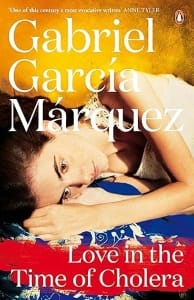
Homework: “The Many Faces of Love” – A Romance Writing Exploration
Objective:
To explore the vast emotional, cultural, and narrative depth of the romance genre by immersing yourself in its subgenres, global traditions, and psychological dynamics. You’ll create unique characters, examine the forces shaping romantic narratives, and begin crafting a love story that is rooted in real history, emotional truth, or mythic symbolism.
Part I – Subgenre Deep Dive (Research + Reflection)
Instructions:
Choose TWO subgenres of romance from the following list. For each, answer the prompts below and write a mini scene (500–800 words):
Historical Romance
Fantasy Romance
Paranormal Romance
Contemporary Romance
Dark Romance
LGBTQ+ Romance
Romantic Suspense
Magical Realism Romance
Sci-Fi Romance
Second-Chance Romance
Enemies to Lovers
Mythological Romance
Gothic Romance
Coming-of-Age Romance
Prompts:
What defines this subgenre emotionally, thematically, and structurally?
What kinds of obstacles are common in this subgenre?
What kind of ending does this subgenre typically offer — and do you want to subvert it?
Create two characters who embody the spirit of this subgenre.
Write a scene where their core emotional conflict becomes visible — it should hint at both their yearning and what’s keeping them apart.
Part II – Cultural Love Across Borders (Global Reflection)
Instructions:
Choose one culture or region from the global romance exploration we discussed:
East Asian (China, Japan, Korea)
South Asian (India, Pakistan, Bangladesh, Sri Lanka)
Middle Eastern (Arabic, Persian, North African)
African (Yoruba, Swahili, Berber, Modern African Diaspora)
European (Medieval to Postmodern, Russian, French, English)
American (Latin America, Indigenous, African American, LGBTQ+ movements)
Research and Reflect:
Myth or Folktale Study: Find one traditional story, myth, or folktale of love from that culture. Summarize it in your own words and analyze its emotional tone. What does this story say about love and loss?
Symbolic Patterns: What symbols, metaphors, or social rules shape how love is expressed in this culture?
Modern Interpretation: Imagine a modern retelling of that story. What changes? What remains timeless?
Write a monologue from one lover’s perspective (300–500 words), set in this cultural backdrop, voicing either their hope, grief, or longing.
Part III – Your Romance Blueprint (Creative Worldbuilding)
This section helps you begin building your own romantic story or universe.
1. Choose a Setting:
Is your romance set in the real world, a fantastical kingdom, a post-apocalyptic wasteland, or a metaphysical dreamscape? Define the time period, location, and genre blend (e.g., “1920s Shanghai with magical realism” or “Dystopian underwater city with forbidden love”).
2. Answer the Big Questions:
What must lovers fight against here — society, fate, magic, family, memory, their own trauma?
What are the emotional rules of this world — are displays of affection open or secretive? Is marriage sacred or obsolete? Is desire praised or punished?
What myth, superstition, or tradition affects how people fall in love?
3. Invent a Unique Cultural Concept of Love:
Create your own word, phrase, or symbol for love in your world. Define what it means — maybe it’s based on shared dreams, battle scars, soul-twins, or even memory weaving. This idea should feel rooted in your world’s logic and history.
Part IV – Final Fusion Exercise (Emotion + Structure)
Instructions:
Now, bring it all together in one of the following formats:
Option A: A Short Story (1,000–1,500 words)
Write a short romance tale based on your original setting, cultural inspiration, and chosen subgenre. The story should include:
An intense first meeting or reunion
A core obstacle (internal or external)
A moment of emotional or spiritual revelation
An open-ended or bittersweet conclusion (bonus if you defy subgenre norms)
Option B: A Romantic Dossier
Create a fictional archive of love letters, therapy notes, diary entries, and fragments of dialogue between your two lovers. Each entry should show the progression of their relationship through tone, language, and time. Use different formats (texts, poems, ancient scrolls, AI messages, etc.) to reflect both your world and your characters’ evolution.
Bonus: Personal Reflection Essay
Prompt:
“What does love mean to me, and how do I want to portray it as a writer?”
Write a personal essay (700–1,000 words) where you reflect on your own values, fears, and hopes surrounding love — and how they influence the kind of romance you want to bring into the world.
Tools & Suggestions:
Use romantic visual references: Watch movies, dramas, or read translated folktales from other countries.
Use sensory writing: How does love smell, sound, and feel in your story? Is it cold like sea foam, or warm like desert wind?
Write with contradiction: Combine vulnerability with strength, longing with resistance, joy with grief. That’s the soul of romance.
Discover more from Ge-erdy Verse
Subscribe to get the latest posts sent to your email.








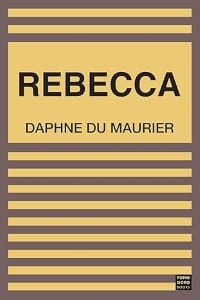
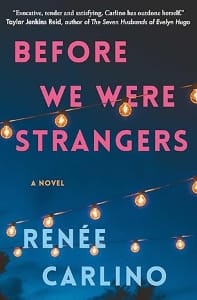
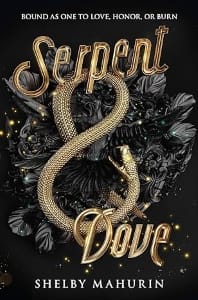
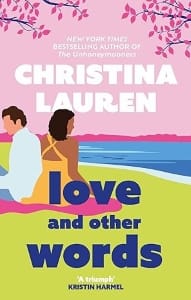
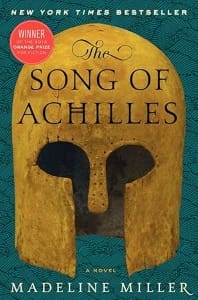
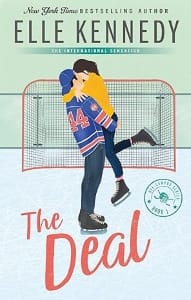

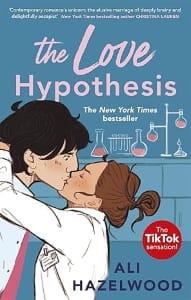
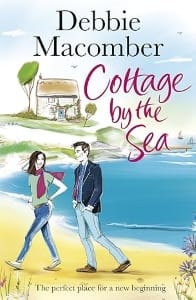
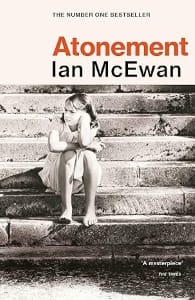
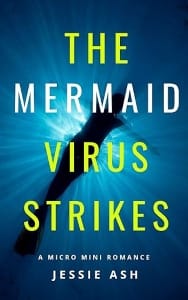
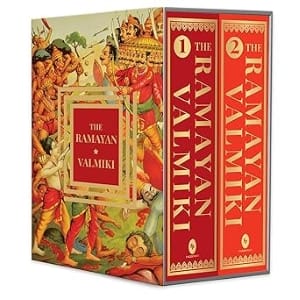
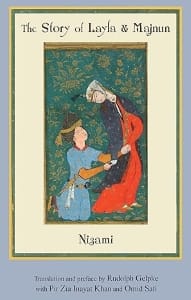
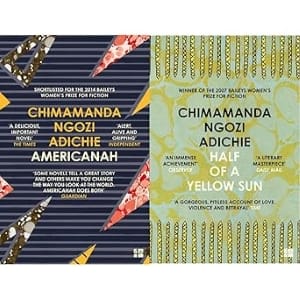
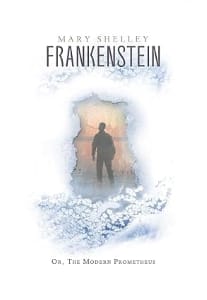

May 28, 2025 @ 6:08 am
naturally like your web site however you need to take a look at the spelling on several of your posts. A number of them are rife with spelling problems and I find it very bothersome to tell the truth on the other hand I will surely come again again.
May 28, 2025 @ 1:51 pm
Sure, we’ll go through our posts to weed out the mistakes!!!